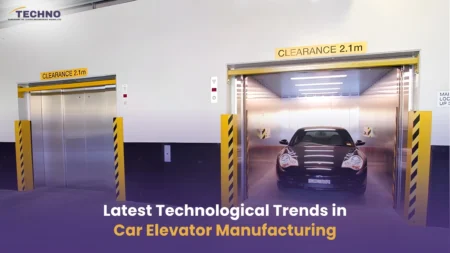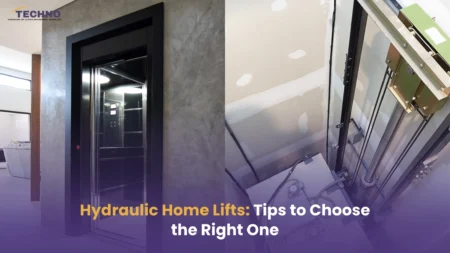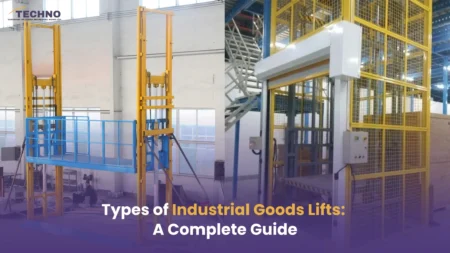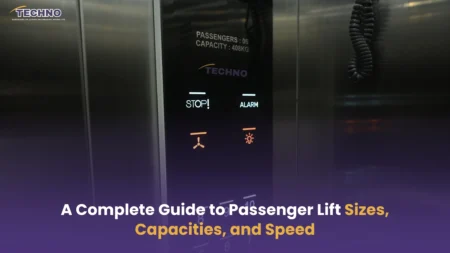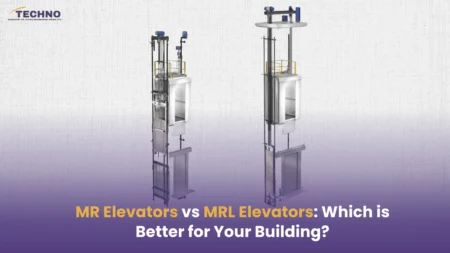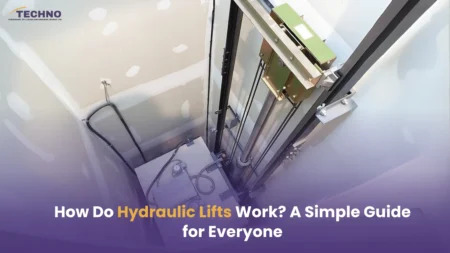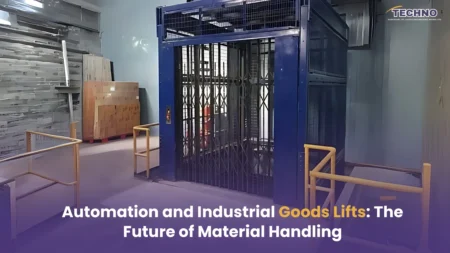As our cities become more vertical and streets become busier, a simple yet troubling question is on the minds of urban planners, builders, and developers: Where do we put all the cars? Parking lots and parking garages are having a tough time keeping up with the ever-increasing demands of urban living, considering 70% of all urban land is considered to be parking. Because of all this, car lifts in metro cities are developing into both a necessity and a more efficient, smarter way to park cars, as urban planners start recognizing smarter and more efficient ways to park cars in metro cities.
Let’s explore why car elevators might soon replace traditional parking methods and how you can be ready to embrace this pioneering solution.
Introduction to Car Elevators
A car elevator is exactly what it sounds like: a vertically positioned lift specially designed to transport vehicles from one level to another within a building or structure. Originally used in upscale homes and showrooms, today, car elevator manufacturers are trying to offer a unique variety of car elevators intended for heavy residential, commercial, and public use.
Car elevators help maximize usable space, minimize the space needed for ramps, and can facilitate the flow of traffic in parking structures, which is why they are perfect in crowded metro cities where the availability of land is heavily limited. They represent a drastic change in how we think about efficiently using every square foot of costly urban land.
Urban Parking Challenges in Metro Cities
Parking presents a special set of difficulties for metro areas:
- Parking challenges in cities: Land Shortage: Conventional parking expansion is unsustainable due to the limited space, which raises the cost of land.
- Traffic Congestion: As cars circle for parking spaces, emissions rise and traffic conditions get worse.
- Time Wastage: It can take up valuable minutes to find parking, which leads to inefficiency and frustration.
- Urban Aesthetics: Big, open parking lots negatively impact the planning and aesthetic appeal of contemporary cities.
- Inefficient Land Use: Often, homes, offices, or green spaces would be a better use of the space that conventional parking takes up.
It is obvious that cities require more intelligent, quick, and space-efficient urban parking options.
Benefits of Car Elevators
If we use car lifts in large cities, they have a number of useful and innovative benefits.
- Space Optimization: Wide ramps and driveways are no longer necessary thanks to vertical movement.
- Greater Parking Capacity: More cars can fit in a smaller area.
- Security: There is less possibility of damage or theft because vehicles are parked in designated areas.
- Luxury Appeal: Especially for high-end residential and commercial projects, installing a car elevator increases a property’s overall value.
- Faster Vehicle Retrieval: Cuts down on waiting in long lines or walking to far-off parking spaces.
- Decreased Construction Costs: Developers will pay less for civil construction when complicated ramp systems are not required.
In short, car elevators are an integral part of smart parking solutions needed for the modern cityscape.
Types of Car Elevator Parking Systems
The right system depends on space availability, usage needs, and budget. The major types include:
Stack Parking Systems:
Ideal for low-rise buildings or compact projects. Vehicles are parked on stacked platforms, either manually moved or semi-automated, saving horizontal space.
Puzzle Parking Systems:
A sophisticated system where vehicles move both horizontally and vertically. Operators can retrieve cars without moving the entire stack, making it highly efficient for buildings with variable parking needs.
Tower Parking Systems:
A vertical automated structure where cars are automatically lifted and slotted into their parking spaces. Popular for high-rise buildings and commercial hubs where land is at a premium.
Rotary Parking Systems:
Just like a Ferris wheel concept, this self-contained vertical parking system rotates cars vertically to provide parking and access within exceptionally tight footprints.
Each of these automated parking systems is developed to fulfill a specific parking problem more efficiently than other systems.
Cost and Installation Considerations
A car elevator for parking may seem like a luxury, but it’s not as expensive or difficult to install as most people think. Among the crucial factors are:
Initial Investment:
Depending on the load capacity, travel height, automation level, and finishes, the initial costs can vary significantly. However, the initial cost is often offset by the added value and space savings.
Building Structure Adaptations:
While car elevators can be more easily integrated into new construction, retrofitting older structures calls for careful structural analysis and possibly reinforcement.
Maintenance and Servicing:
For safe, efficient operation, routine maintenance is essential. Longevity and little downtime are guaranteed by service agreements with skilled suppliers.
Energy Efficiency:
Newer models are less expensive over time because of their regenerative braking and energy-saving features.
Regulatory bodies’ approvals:
Careful coordination with elevators is necessary because they must abide by stringent building codes, fire safety regulations, and operational guidelines.
When investing in modern parking technology, developers can more effectively plan budgets and project timelines by being aware of these factors.
Case Studies from Metro Cities
Cities like Mumbai, Delhi, and Bangalore have already started embracing car parking space saving solutions with real-world success stories:
Mumbai: In crowded areas like Lower Parel, premium towers have deployed multi-level vertical parking systems, freeing up ground space for recreational and commercial use.
Delhi NCR: To maintain sleek urban aesthetics and expand parking capacity without purchasing more land, upscale corporate buildings in Gurgaon are incorporating car elevators.
Bangalore: Tower parking systems have begun to be installed in tech parks near Whitefield and Electronic City, allowing them to accommodate thousands of vehicles every day without experiencing horizontal sprawl.
These actual cases show how vertical parking structures are increasingly necessary for environmentally friendly city planning.
Environmental Impact
A surprising yet crucial advantage of car elevators lies in their environmental benefits:
Reduced Land Usage:
Minimizing horizontal parking lots helps preserve green spaces and urban biodiversity.
Lower Emissions:
Quick parking and retrieval reduce the time vehicles idle, directly lowering carbon emissions.
Energy-Efficient Systems:
Newer models have environmentally beneficial features like low power consumption and energy recovery systems.
Heat Reduction:
In metropolitan areas, less concrete sprawl reduces heat absorption and helps control the effects of urban heat islands.
It is obvious that making investments in the future of parking in urban areas is not only wise but also sustainable and responsible.
Challenges and Limitations
While promising, car elevators do have some limitations:
Upfront Costs:
It may seem high for small projects without long-term vision, though returns are significant when factoring operational efficiency and land use savings.
Power Dependency:
To guarantee continuous operation, car elevators need a dependable electrical supply and backup systems.
Technical Expertise Required:
In order to prevent operational inefficiencies, professional installation and maintenance are crucial.
Builders and developers can make better plans and select reliable suppliers who offer thorough support by being aware of these constraints.
Car Elevators vs Traditional Parking
When comparing car elevators vs traditional parking, here’s a simple breakdown:
Aspect | Traditional Parking | Car Elevators |
Space Usage | High | Minimal |
Construction Time | Longer | Shorter, especially prefabricated systems |
Cost Over Time | Higher due to land costs | Lower with optimized use |
Security | Moderate | High |
Sustainability | Poor | Excellent |
Urban Aesthetics | Cluttered | Sleek and Modern |
The choice is clear: investing in a car elevator for parking is investing in efficiency, sustainability, and future readiness.
Future of Urban Parking Solutions
Looking ahead, the future of parking in urban areas is intelligent, automated, and vertical.
Key trends include:
- Integration with Smart Cities: Car elevators will link directly with smart traffic and parking management systems.
- AI-based Parking: Predictive parking solutions will optimize how and where cars are parked.
- Eco-Friendly Designs: Green-certified parking systems will become the norm, driven by sustainability goals.
Builders, architects, and planners who adopt urban parking alternatives today will lead tomorrow’s sustainable urban development.
By embracing modern parking technology, you’re not just meeting today’s demands, you’re setting the foundation for smarter, greener metro cities.
Final Take
As someone deeply invested in building the future, you understand that smart infrastructure isn’t optional anymore; it’s essential. Car elevators are no longer an indulgence but a strategic asset for any forward-thinking project.
Techno Industries, one of the reputed Car elevator manufacturers, blends precision engineering with visionary design to offer the most reliable and advanced car elevator systems in the market. Let’s redefine urban parking together as efficient, elegant, and extraordinary.
Ready to explore the future of parking?
Contact Techno Industries today for a consultation that moves your project vertically and is visionary.


